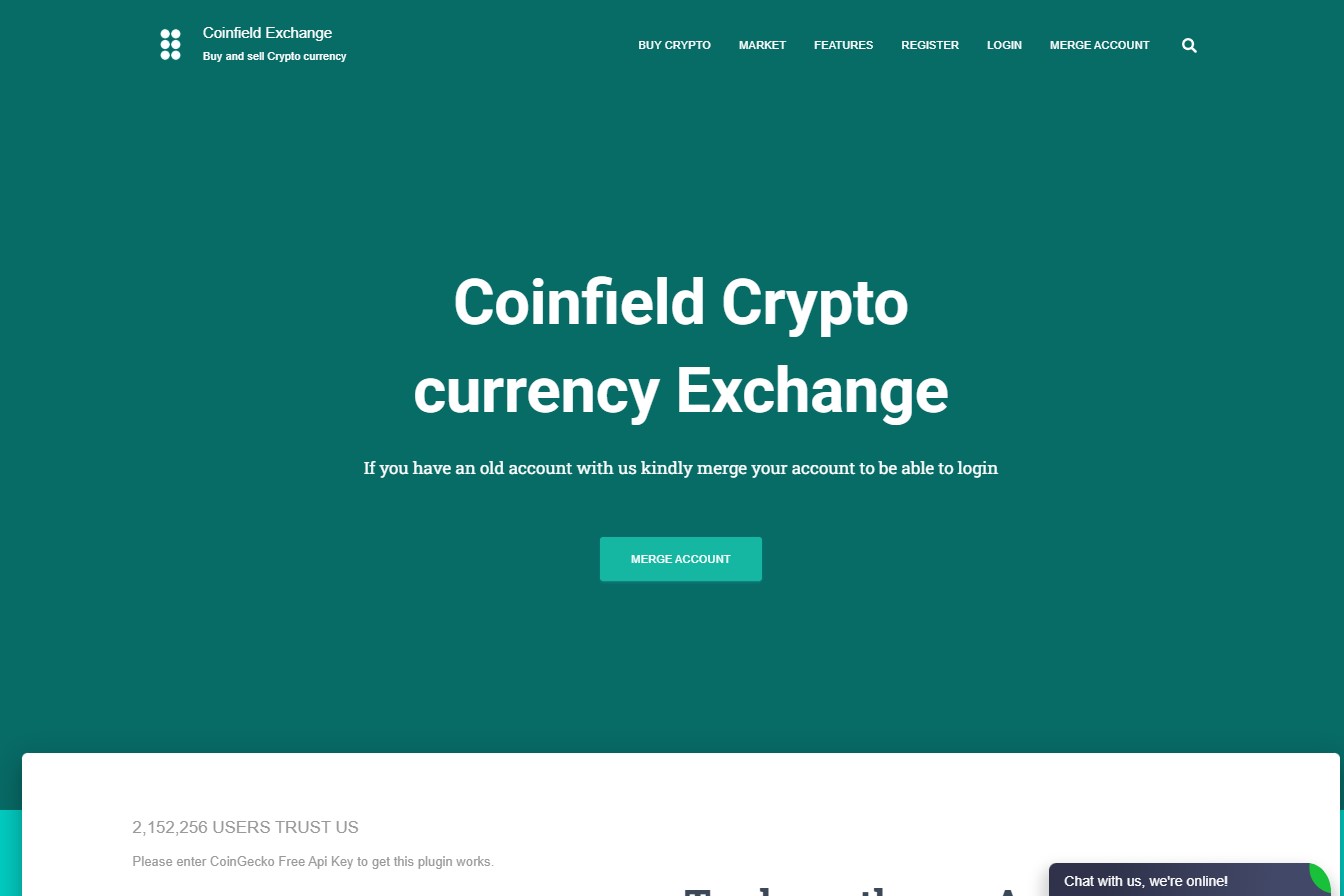CoinField.us.com Scam Review -A Fraudulent Crypto Flatform
Opening — the polished pitch that felt like a shortcut to crypto gains (investor vignette)
Aiden, new to crypto, followed a friendly influencer to CoinField.us.com. The site promised “fast onboarding, low fees, and algorithmic trading options,” with a chat pop-up offering immediate account setup and a welcome bonus. The interface looked modern; the initial deposit process was smooth; and a small test withdrawal cleared, which made Aiden confident enough to add more funds.
Two weeks later, when Aiden requested a larger withdrawal, momentum stalled: new document requests, unexpected processing fees, and a suddenly slow support channel. The confident rep who had earlier encouraged deposits became vague. That progression — warm onboarding, early small wins, then escalating friction — is the same pattern that shows up repeatedly in user reports tied to CoinField.us.com and is the practical lens we use throughout this review.
1) Presentation vs. provable credentials
CoinField.us.com invests heavily in professionalism: slick UX, glossy charts, testimonials, and a polished onboarding flow. That level of polish reduces initial suspicion, and it’s what many prospective customers see first.
However, design is not the same as accountability. Credible exchanges and custodians make verifiable disclosures easy to find: a legal company name, registration number, physical headquarters, named executives, and clear regulator information. With CoinField.us.com, public details about legal identity, licensing, and custodial arrangements are thin or ambiguous. Where a prospective user would expect straightforward, checkable credentials, they instead encounter marketing language that emphasizes features over verifiable facts. That opacity is a practical red flag.
2) Regulation — the missing safety net
Licensing and oversight are among the strongest consumer protections in financial services. Regulated platforms adhere to capital rules, client separation, audits, and complaints procedures — practical safeguards that matter when things go wrong.
CoinField.us.com’s public materials lack clear, verifiable regulatory disclosures. Vague statements about “partner compliance” or generalized compliance wording are not the same as an actual licence shown with an identifiable regulator and licence number. Without a clear regulator, users have materially less protection and the platform’s accountability is uncertain.
3) Ownership, domain and technical signals
Technical metadata is not a smoking gun, but it is useful context. Masked domain ownership, a relatively recent registration date, or hosting patterns shared with other short-lived finance sites are practical indicators of operational fragility.
CoinField.us.com’s domain and WHOIS footprint show traits that make tracing operators harder: privacy protection and limited public corporate filings tied to the site. That makes it easier for operators to rebrand or abandon a name in the face of scrutiny — a real risk for users who keep funds on the platform.
4) Marketing mechanics — urgency, bonuses and account managers
A recurring complaint with CoinField.us.com is that its marketing and onboarding rely on powerful conversion levers:
-
Urgency: limited-time bonuses or “VIP” tiers that encourage quick deposits.
-
Social proof: testimonials and screenshots used to create momentum.
-
Human touch: account specialists who guide and pressure users into higher deposits.
Those tactics are effective sales tools. In an operationally sound platform they’re paired with transparent, easy-to-find disclosures. In the absence of verifiable safeguards, they function mainly to accelerate incoming deposits — often ahead of users performing adequate checks.
5) Deposit flow versus withdrawal experience — the key litmus test
The most practical test of any crypto service is how it treats money coming in compared to money trying to leave. The red-flag sequence looks like this:
-
Easy deposit (multiple rails accepted).
-
Early small withdrawals processed to build confidence.
-
Larger withdrawal requests prompt additional KYC, surprise fees, or indefinite delays.
-
Support becomes slow or templated after payout requests.
Multiple user reports associated with CoinField.us.com describe exactly that asymmetry. Small test withdrawals may clear, but larger cash-outs tend to reveal obstacles that were not clearly disclosed at onboarding. When deposits in are frictionless and withdrawals out are not, the platform’s incentives and architecture are effectively optimized to hold capital rather than to return it smoothly.
6) Fees, fine print and contractual levers
Many problematic platforms rely on contractual language to create operational levers they can invoke later: ambiguous clauses allowing freezes for “security,” retroactive processing fees, or bonus tie-ins that render deposited sums partially non-withdrawable unless unrealistic trading volumes are met.
CoinField.us.com’s terms and conditions reportedly include broad language that grants significant discretionary power to the operator. Even if such clauses are legal on paper, they become practical tools to delay or reduce payouts when invoked. Always read the user agreement carefully — it’s where the real rules live.
7) Customer support and communication behavior
A very practical indicator of trustworthiness is consistent, documented customer support. Reputable platforms maintain a transparent ticketing system, clear timelines, and verifiable escalation paths.
Reports tied to CoinField.us.com show a pattern: prompt, courteous outreach before deposit and a noticeable decline in responsiveness after withdrawal requests grow larger. When support becomes scripted, delayed or disappears, users are left with fewer practical options. That behavior aligns with many other platforms where users later report losing access to funds.
8) On-site proof vs independent verification
Screenshots of balances, curated testimonials and internal dashboards are powerful marketing tools — but they are not independent verification. Meaningful proof requires exportable transaction histories, named custodians or banks, third-party audits, or verifiable on-chain receipts for crypto flows.
CoinField.us.com relies heavily on internal metrics and curated customer stories, but lacks easily accessible independent attestations. In the world of crypto, where on-chain proof is possible, the absence of verifiable transactional evidence is a notable shortcoming.
9) Psychological mechanics — why users escalate exposure
CoinField.us.com’s design plays into cognitive biases: authority cues (professional site, “advanced” tech), social proof (testimonials), scarcity (limited VIP slots), and the anchoring effect of small initial wins. Those elements shorten deliberation and made Aiden increase deposits before fully verifying protections. Recognizing these mechanics is important: they explain how even prudent people can quickly escalate exposure.
10) Quick red-flag checklist — a one-page practical test
Before placing funds on CoinField.us.com, run this quick filter:
-
Is the legal company name, registration number and physical address published and verifiable?
-
Does the platform display a verifiable licence from a recognised regulator?
-
Are custodial banks or named wallet custody partners disclosed and checkable?
-
Are withdrawal fees and bonus conditions clearly disclosed before you deposit?
-
Do independent users document large, verifiable withdrawals (not only screenshots)?
-
Does customer support remain responsive after you request a payout?
-
Is domain ownership transparent (not masked) and does the domain have a substantial history?
-
Do the platform’s terms avoid granting the operator broad unilateral powers to freeze funds?
If several answers are “no,” your exposure is materially elevated.
Analytical conclusion — why the cumulative pattern matters
No single concern proves criminal intent. New firms can be imperfect, and marketing can be exuberant. The practical risk emerges when several issues converge: anonymous or masked ownership, absent verifiable regulation, aggressive deposit-acceleration tactics, internal proofs instead of independent audits, and a consistent deposit-easy/withdrawal-hard narrative. CoinField.us.com currently displays multiple elements of that risky constellation.
From a risk-management perspective, it’s prudent to assume elevated probability of loss on platforms that combine these traits. If you choose to interact with CoinField.us.com at all, keep exposure minimal, document every transaction, and test the withdrawal mechanics thoroughly with small amounts — but bear in mind the cumulative warning signals highlighted here.
Report CoinField.us.com Scam and Recover Your Funds
If you have lost money to CoinField.us.com Scam, it’s important to take action immediately. Report the scam to Jayen-consulting.com, a trusted platform that assists victims in recovering their stolen funds. The sooner you act, the better your chances of reclaiming your money and holding these fraudsters accountable.
Scam brokers like CoinField.us.com continue to target unsuspecting investors. Stay informed, avoid unregulated platforms, and report scams to protect yourself and others from financial fraud.
Stay smart. Stay safe.






